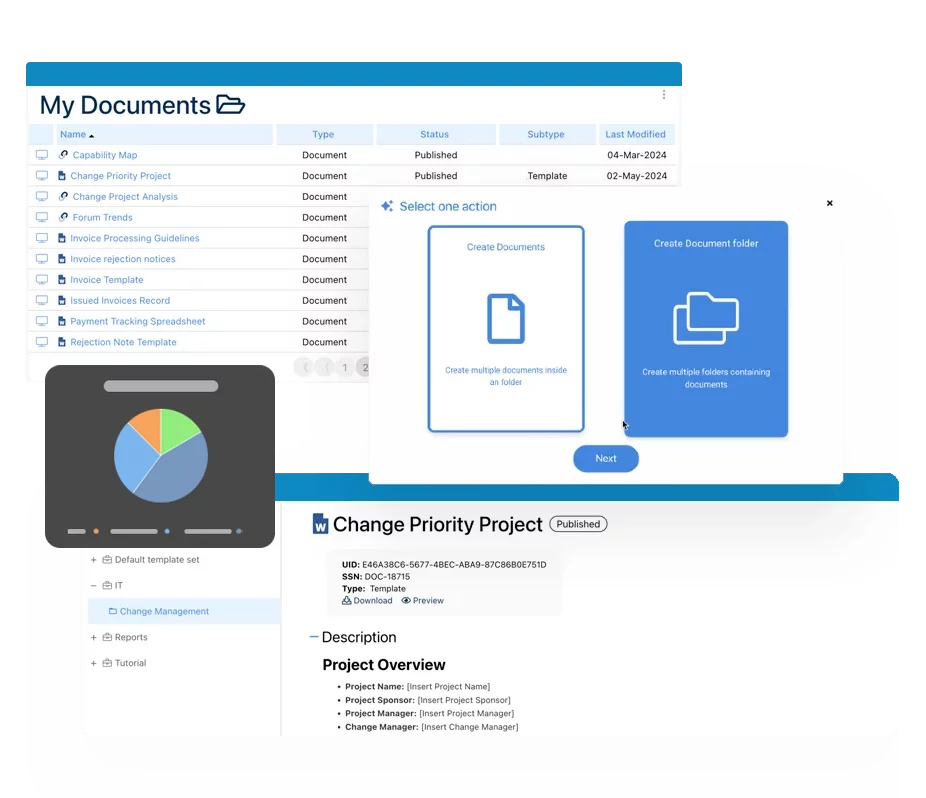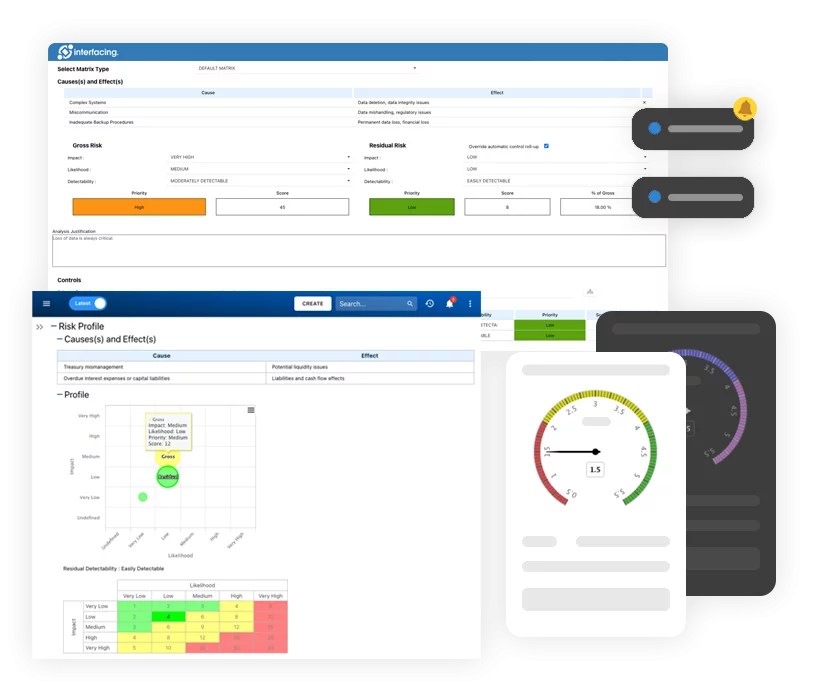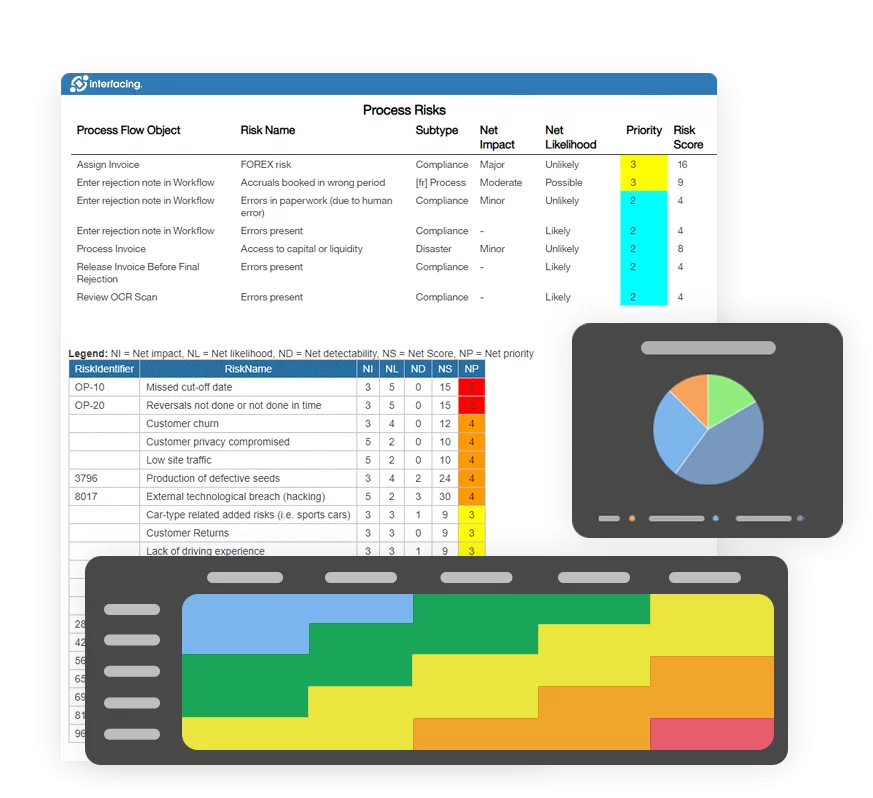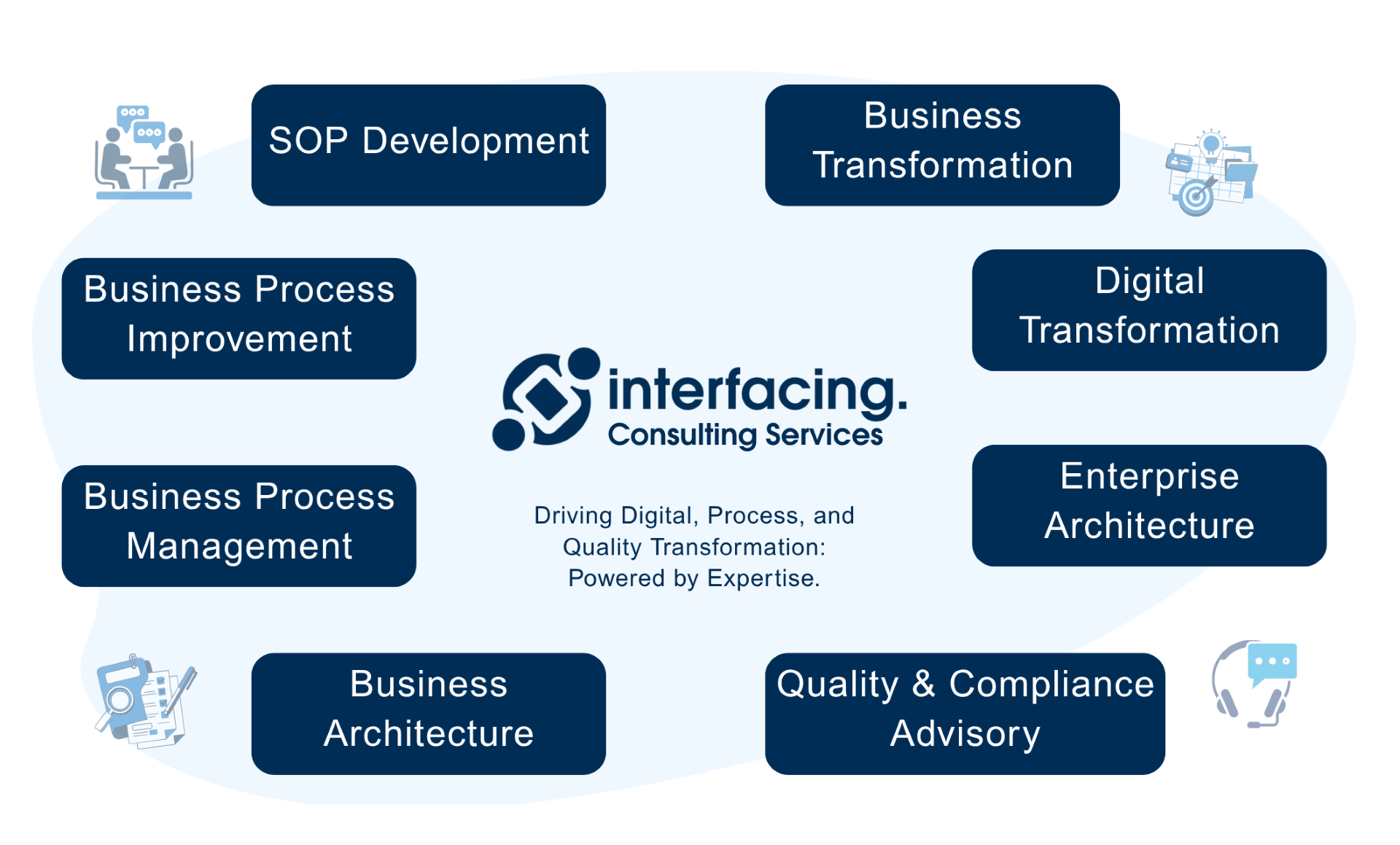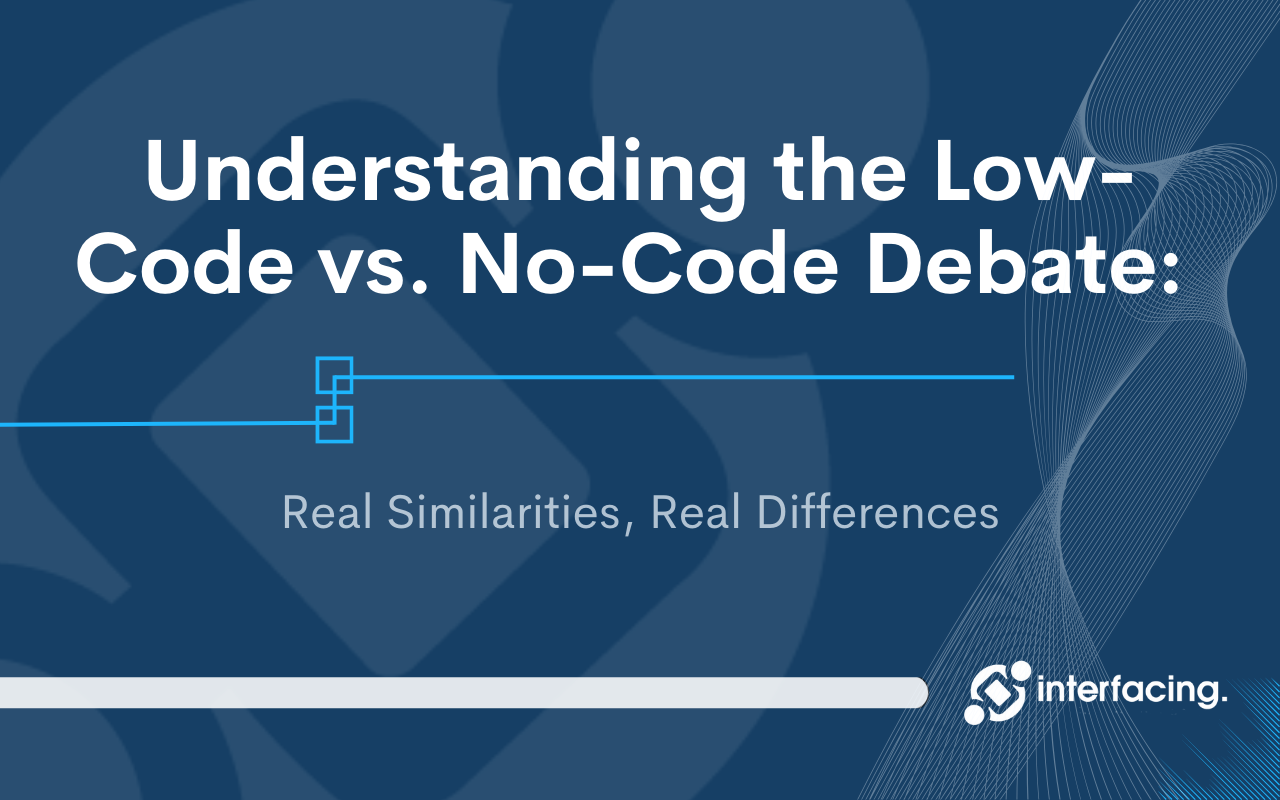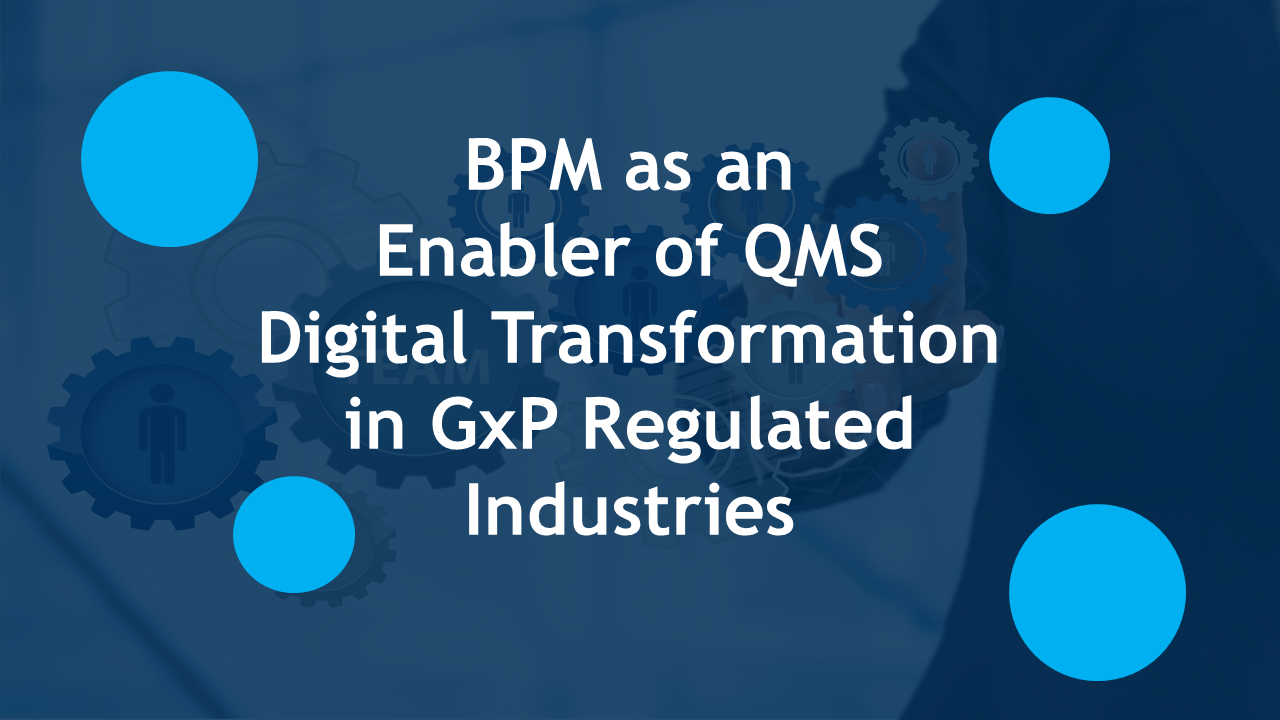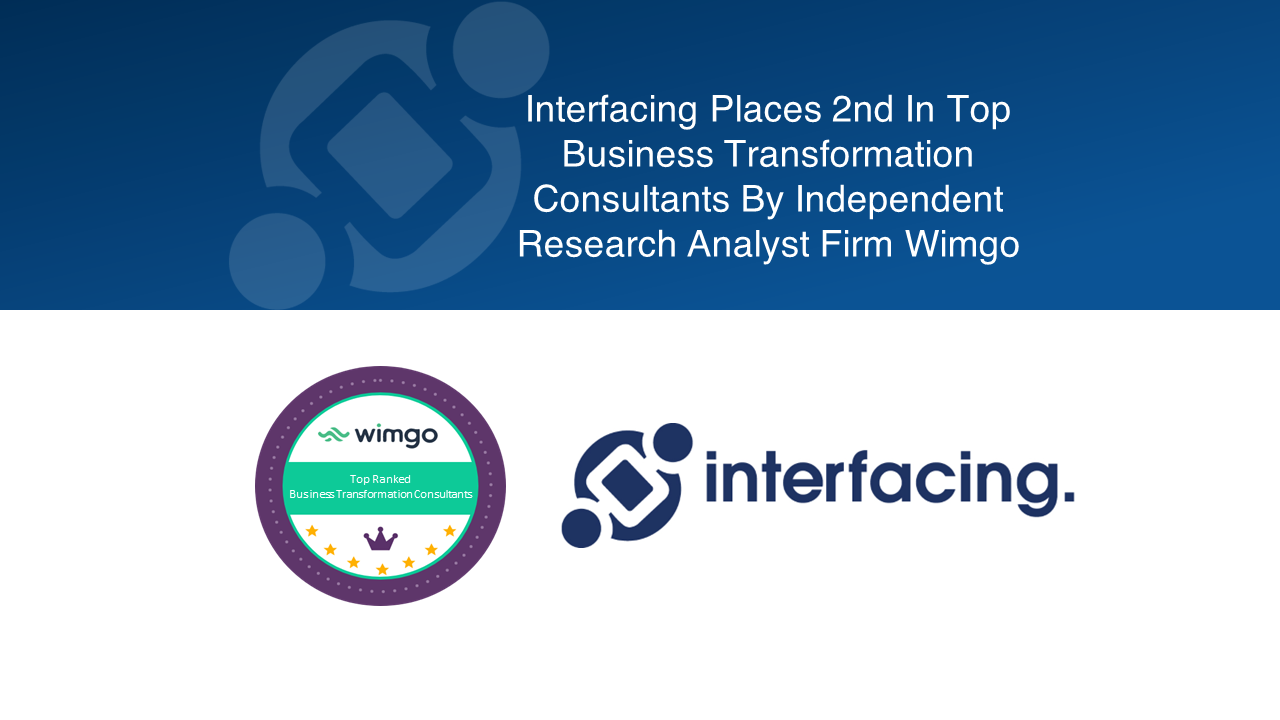What is No-code / Zero-code?
In short, these are solutions built for citizen developers. They are used by people who lack any development experience, especially in programming in any language. The no-code vendor would develop the solution with everything a user would need in the tool to begin immediately. Blogging platforms use this method as well as e-commerce website design businesses to get a user up and running right away. A concern though is that the no-code tools are very difficult to customize and use with a unique functionality. This can be a problem if you need to address specific challenges to solve a single issue.
The Difference Between Low-code and No-code
The majority of the confusion lies within the application itself on the UI end. This is where we can help sort out the differences.
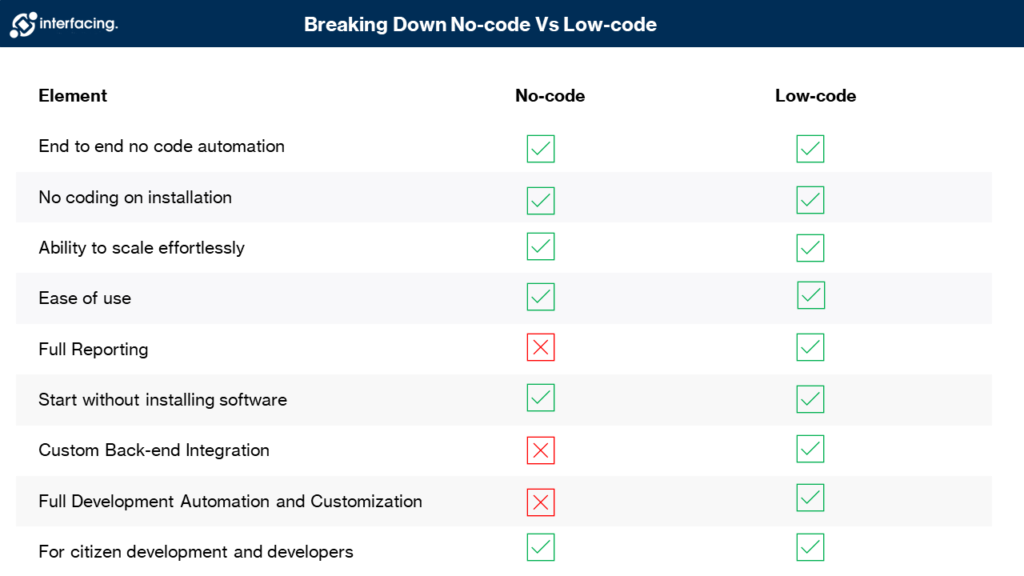
- No-code solutions can only cater to one type of customer: the business user or citizen developer.
While the best advantage of using zero-code applications is in the little amount of training needed to use the tool and ability to build applications quickly, its downside is that it comes with many capability limitations that don’t align with the business users actual requirements (usually only meets about 60% of the needs – great in a demo or trial but not in production). As you can imagine, beyond functional limitations the lack of IT depth usually also leads to poorly designed apps, reporting limitations, security concerns, integration problems and compliance issues. In the worst context, the limitations may turn your users away altogether.
- Low-code application development is geared towards regular business users and developers alike.
Creating useful and properly/purposefully designed apps that satisfy all of business’ requirements and IT requirements alike while reducing dependency on IT/development. Low-code will extend the teams bandwidth and solutions capabilities quickly but with governance and controls in place along the way. Professional developers are more efficient overall and use manual-coding only when necessary which saves time and reduces technical tasks and bugs.
- Low-code application development is geared towards regular business users and developers alike.
When you look at it quickly, it’s very easy to confuse no-code (also known as zero-code) and low-code. They may seem alike after all, even sound the same (low vs no). At times even some of the biggest analyst firms have a hard time differentiating between these terms. In a recent evaluation, even Gartner saw zero-code as a component of low-code, including them as one in a Magic Quadrant report on Enterprise Low-code platforms.
There are in fact a few significant differences between no-code (zero-code) and low-code platforms. If your organization is looking to branch out of traditional application development or may just want to explore visual application development, you will most likely want to be aware of what you’re getting from each.
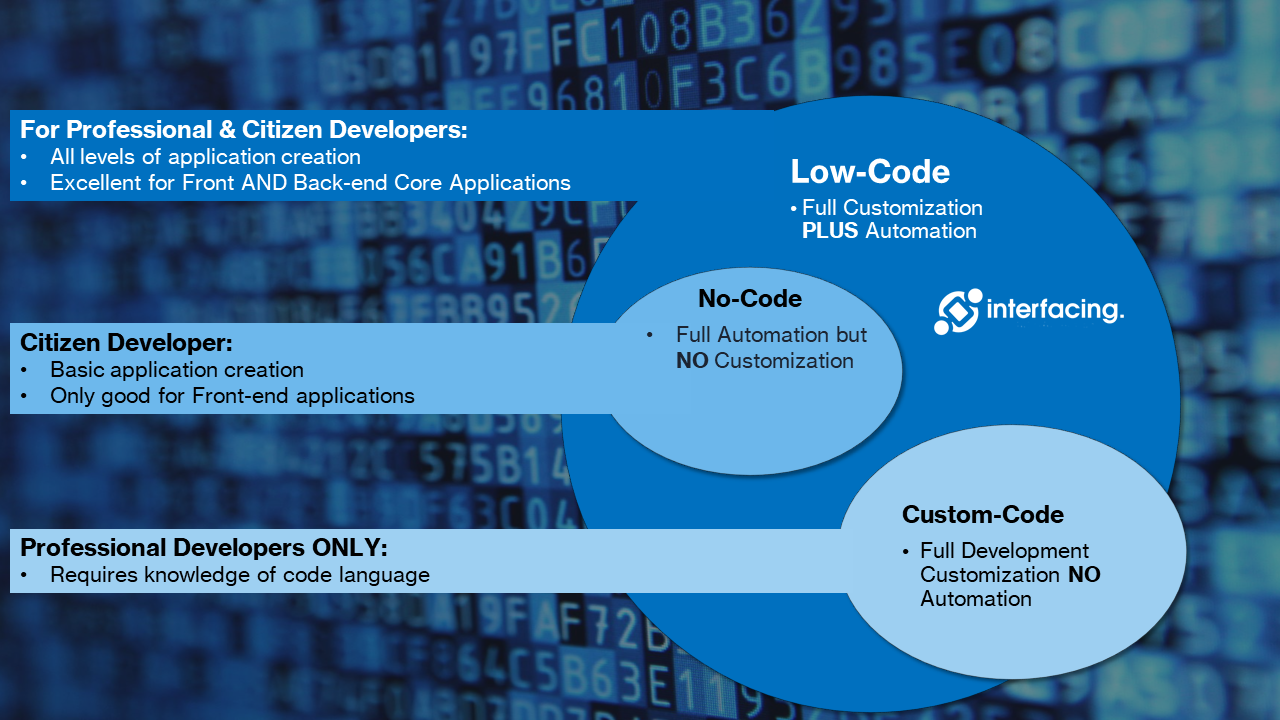
A look at Low-code: definition
We’ll look at low-code first. Low-code application development is a way (a visual tool used) for developers (new and experienced) to design applications with minimum hand-coding quickly and efficiently. One needs to understand that low-code can be used here as a noun, as a “thing”, similar to how we use Python or C#. Low-code can also be used as a verb though to indicate the fact that you are using less handwritten code than you would normally use when describing the literal method of developing an application.
When using a low-code platform, it will seem similar to a traditional IDE (integrated development environment) as it contains components and tools that complement how developers work. Loc-code though is much more than what traditional IDE offers. Simply put, low-code offers drag and drop of existing code visualized as “blocks” into a workflow in order to create applications. Given that it can completely replace traditional hand-coding of an entire application, skilled developers can focus away from the burdens of repetitive coding and work smarter and faster on other tasks. In short, they can focus on the 10% of the the application that makes it a differentiator.
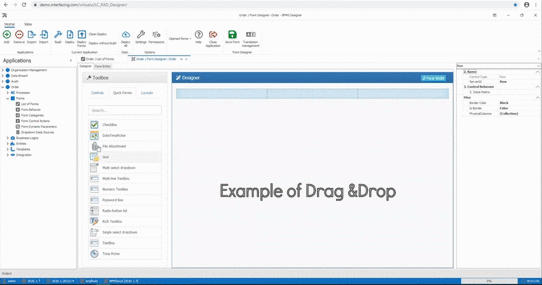
Of course, the alternative to low-code is the obvious of writing thousands of lines of complex syntax and code, debugging along the way and testing. Bypassing the laborious task of hand-coding and instead building applications visually can allow development of applications up to 10x faster, thus utilizing your developers time and skillset much better.
Benefits of Low-Code
This is an exceptionally long list if we take into account opinions and input from hundreds of vendors in the marketplace. That said, let’s look at the most often discussed benefits to using low-code application development.
Speed
This has to be the most important benefit of all.
- Drag and drop functionality, logic and data models, models for business processes and pre-built user interfaces enable full-stack cross-platform rapid application development.
- Easy to implement connectors and APIs to integrate with third-party tools commonly used so little to no time is lost due to new learning curves.
- The advantage of a ‘one-click’ application delivery, that can automatically track all changes and handle deployment processes and database scripts efficiently, while eliminating any of these processes that were originally time-consuming.
Consistently Agile / Agility
When discussing agility in business, low-code enables enterprise organizations to rapidly pivot when necessary in response to market changes and new opportunities by using digital innovations to solve the business problem faced. To be blunt, low-code helps to compete with and disrupt the disruptors.
How, do you ask? It is all about the speed as mentioned above. When you have the ability o design and build within a few weeks and then to tweak and deploy within a few hours or minutes then you are taking full advantage of the agility to respond to dynamic business conditions.
In addition to speed, low-code can offer the delivery of new cloud applications that offer legacy integration so you can meet changing customer needs that much faster. This allows your customers for example to integrate with your systems in any way this wish. You can now modernize your systems today using microservices, containers, serverless environments and more that were normally held out for newer applications.
Multiple access = multiexperience satisfaction
As noted above, customers are more satisfied if they are given the opportunity to interact with your application in ways they are more comfortable with.
This is known as the “multiexperience”, a term coined by Gartner. Basically, without the use of big budgets, using low-code offers your customers an omnichannel experience to rival those of the leaders who have used expensive development teams.
To understand multiexperience is to understand it from a user perspective. This involves delivering a frictionless environment to the customer across multiple touch-points, and this is where low-code makes it easy. Using pre-built templates, chatbots, AI integration, automated refactoring and more, your organization ensures all areas a customer experiences along the way remain consistent and customers transition along your systems without needing to relearn any steps.
All Access development
With low-code, anyone in the organization can unleash their creative potential and contribute or collaborate to deliver great solutions. This could also come from new teams in the business now that may not have had the opportunity to be a part of the process before. Developers who are new to the organization can use low-code instead of learning the hand-code portion and begin delivering right away. Even those who do not have a technical background (a.k.a. “citizen developers”) can use the pre-built functionality to create basic apps.
This also offers the more seasoned developers the ability to use visual code for the majority of the application build and quickly switching over to hand-coding when a specific need for it arises.
- Drag and drop functionality, logic and data models, models for business processes and pre-built user interfaces enable full-stack cross-platform rapid application development.
- Easy to implement connectors and APIs to integrate with third-party tools commonly used so little to no time is lost due to new learning curves.
- The advantage of a ‘one-click’ application delivery, that can automatically track all changes and handle deployment processes and database scripts efficiently, while eliminating any of these processes that were originally time-consuming.
- IT teams are able to control and monitor all projects with assistance from a central console providing visibility to environments, IT users, infrastructure, applications and security.
- Developers can design and build applications knowing no interference will come to break them and/or with the ability to have multiple teams or developers to work on the same module concurrently.
Additionally, shadow IT would be dispelled using low-code. Shadow IT is a term where unsanctioned business apps are created and used daily without the approval or even knowledge of the IT department. Low-code offers to bring shadow out of the darkness and into an environment where business users can develop simple apps using approved best practices in low-code development.
An excellent example would have an organization using a dashboard that uses AI to analyze low-code execution and implementation metrics that might include performance, security, user experience and architecture recommendations.
Low-Code Quick Facts
Deliver applications faster, optimize resources, and maximize ROI with Interfacing's Low-Code platform. Pre-built features, rapid development, and rollback capabilities let you focus on driving business growth while ensuring smooth, secure deployments.


When to Use Low-code or No-code
They are both built with agility in mind. While from a distance, they will look similar, their use cases are quite different.Low-code is used more for applications that must be sophisticated or complex as they must run important and often mission-critical processes. These are mostly for the core of your business. Low-code is also great for less sophisticated standalone apps like mobile or web apps. There is no real limit to low-codes versatility.
On the opposite end, no-code should only be used for front-end use cases. Depending on the side of your organization, there is generally room for both to be used. It may be a good solution for those who use DevOps as the combination of the two could provide a perfect application development environment.
In a world that competes for faster response to market conditions, having both platforms on hand offers a competitive advantage for developers and organizations who use them. However, unless you are only developing the most basic of applications, low-code will forever be the better option for your organization.
Low-code offers the best in flexibility and controls. This translates to the fact that you can build more varied, responsive and powerful applications while at the same time, offer the solution you are building to go from concept to implementation in an incredibly short amount of time. All done with security and compliance concerns taken care of along the way.
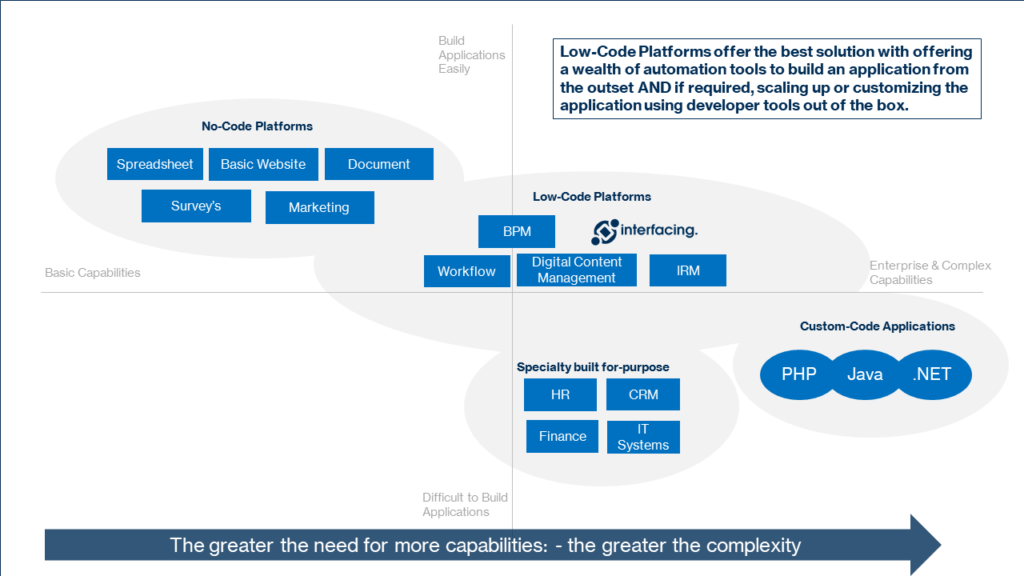
Why Choose Interfacing?
With over two decades of AI, Quality, Process, and Compliance software expertise, Interfacing continues to be a leader in the industry. To-date, it has served over 500+ world-class enterprises and management consulting firms from all industries and sectors. We continue to provide digital, cloud & AI solutions that enable organizations to enhance, control and streamline their processes while easing the burden of regulatory compliance and quality management programs.
To explore further or discuss how Interfacing can assist your organization, please complete the form below.

Documentation: Driving Transformation, Governance and Control
• Gain real-time, comprehensive insights into your operations.
• Improve governance, efficiency, and compliance.
• Ensure seamless alignment with regulatory standards.

eQMS: Automating Quality & Compliance Workflows & Reporting
• Simplify quality management with automated workflows and monitoring.
• Streamline CAPA, supplier audits, training and related workflows.
• Turn documentation into actionable insights for Quality 4.0

Low-Code Rapid Application Development: Accelerating Digital Transformation
• Build custom, scalable applications swiftly
• Reducing development time and cost
• Adapt faster and stay agile in the face of
evolving customer and business needs.
AI to Transform your Business!
The AI-powered tools are designed to streamline operations, enhance compliance, and drive sustainable growth. Check out how AI can:
• Respond to employee inquiries
• Transform videos into processes
• Assess regulatory impact & process improvements
• Generate forms, processes, risks, regulations, KPIs & more
• Parse regulatory standards into requirements

Request Free Demo
Document, analyze, improve, digitize and monitor your business processes, risks, regulatory requirements and performance indicators within Interfacing’s Digital Twin integrated management system the Enterprise Process Center®!




